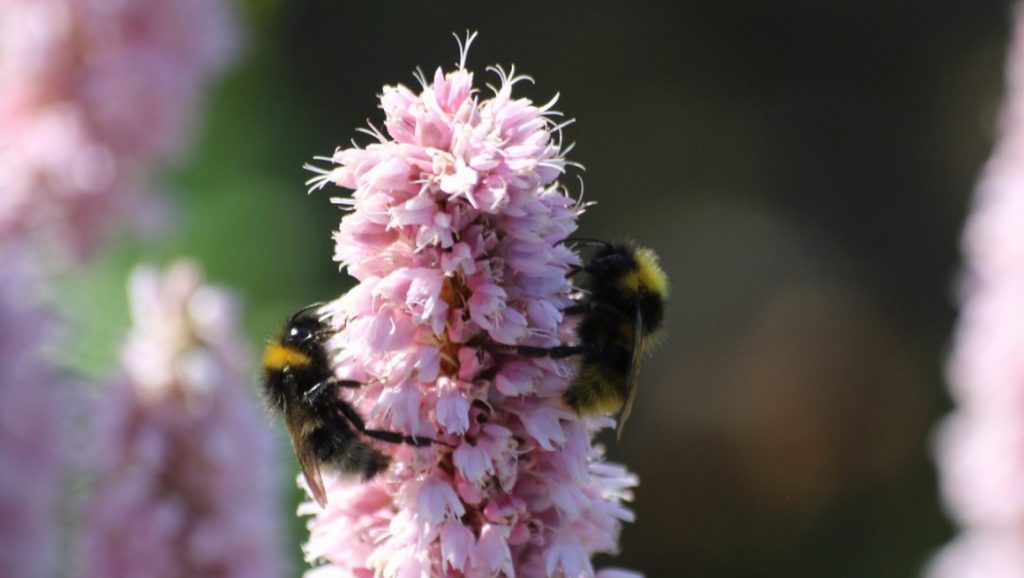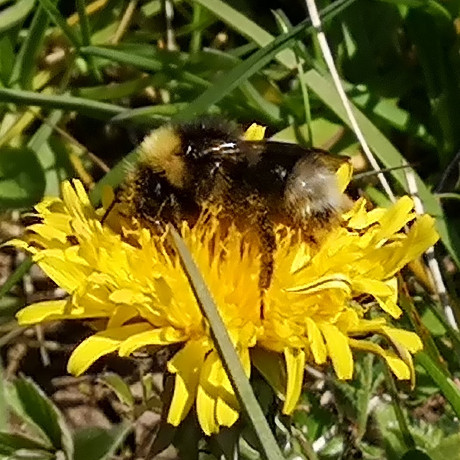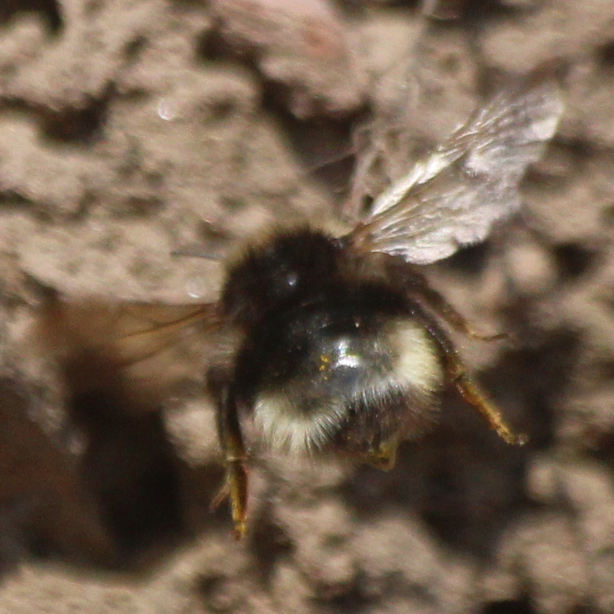By Gavin Ramsay
Our 15 species of classic bumble bee in Scotland are joined by five cuckoo bees, once placed in their own Psithyrus genus but now, after DNA-based studies, included as a separate group within Bombus. Spotting these bees can be hard but most do have features that make them stand out. Taking photos and trying to survey bees in your area really helps spot these more unusual types.
All these cuckoo bee species have their preferred host bumble bee. Mated cuckoo bee females in spring seek out nests of their hosts at the ideal stage to usurp the queen. This happens once queens of the host species have established their nests but before they are populated by large and strong adult workers ready to repel invaders. The cuckoo bee female will try to gain entry to the nest and either kill or subdue the resident queen, often lurking at the edge of the nest until she has adopted the smell of the host colony.

Cuckoo bees can be seen during the spring when they spend time searching for entrances to the nests of their host and are also out and about as the sexual forms emerge through summer. Males can be conspicuous as they lounge on larger flowers in the herbaceous border, scent-marking them to attract females in a form of lekking.
How can you spot a cuckoo bee? Females of the most common species in Scotland have a white tail and single broad yellow band on a black background often with a second band at the junction of the thorax and abdomen which can be inconspicuous. There are two features that discriminate them from females of other bumble bee species. One is that their hind legs do not bear corbiculae for pollen collection. As nest parasites, they rely on the host workers to do the work for them. Another is that they have heavily thickened exoskeleton, an adaptation to protect them when invading nests, and this thickening extends to their smoky-looking wings.
The species illustrated here is the forest cuckoo bee, Bombus sylvestris, one of the easiest species to find here in Tayside. Numbers of this cuckoo bee species seem to fluctuate from year to year, as does its usual host, the early bumble bee, Bombus pratorum. Females can be quite conspicuous in the first half of April as they search for burrows with nests of their host – on the woodland floor and in more open locations at the edge of woodland. They have a tucked-in appearance with the tail curled forward. The new generation, including males, is on the wing from late June.

Female forest cuckoo bee, Bombus sylvestris, feeding on dandelion in Kingoodie quarries April 2019 
Female forest cuckoo bee seeking nests of a host, Bombus pratorum, Kinnoull Hill, Perth, April 2020
Bombus sylvestris has long hairs and a shaggy appearance. Both sexes have a black tip to the tail with some orange hairs on the tip. Males have different colour forms including the white-tailed form and a gold-tailed variant which is more common in Scotland than further south. This bee is recorded across most of Scotland and, although the distribution maps are sparse NW of the Great Glen, it is worth looking out for anywhere. Its main host is found across much of Scotland and its alternative hosts, the heath and the bilberry bumble bees, extend its possible range further. If you find any male forest cuckoo bees resting on flowers, have a sniff and see if you can spot their characteristic mousy aroma! Apparently this is also detectable where males may patrol along woodland edges.
